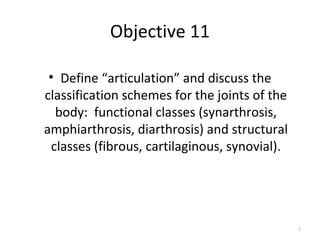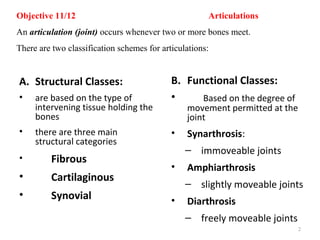There are three main classification schemes for joints in the body:
1. Structural classes include fibrous, cartilaginous, and synovial joints.
2. Functional classes include synarthrosis (immovable), amphiarthrosis (slightly movable), and diarthrosis (freely movable).
3. Six classes of synovial joints are gliding, hinge, pivot, condyloid, saddle, and ball-and-socket, which permit different degrees of movement through their structural designs.









































